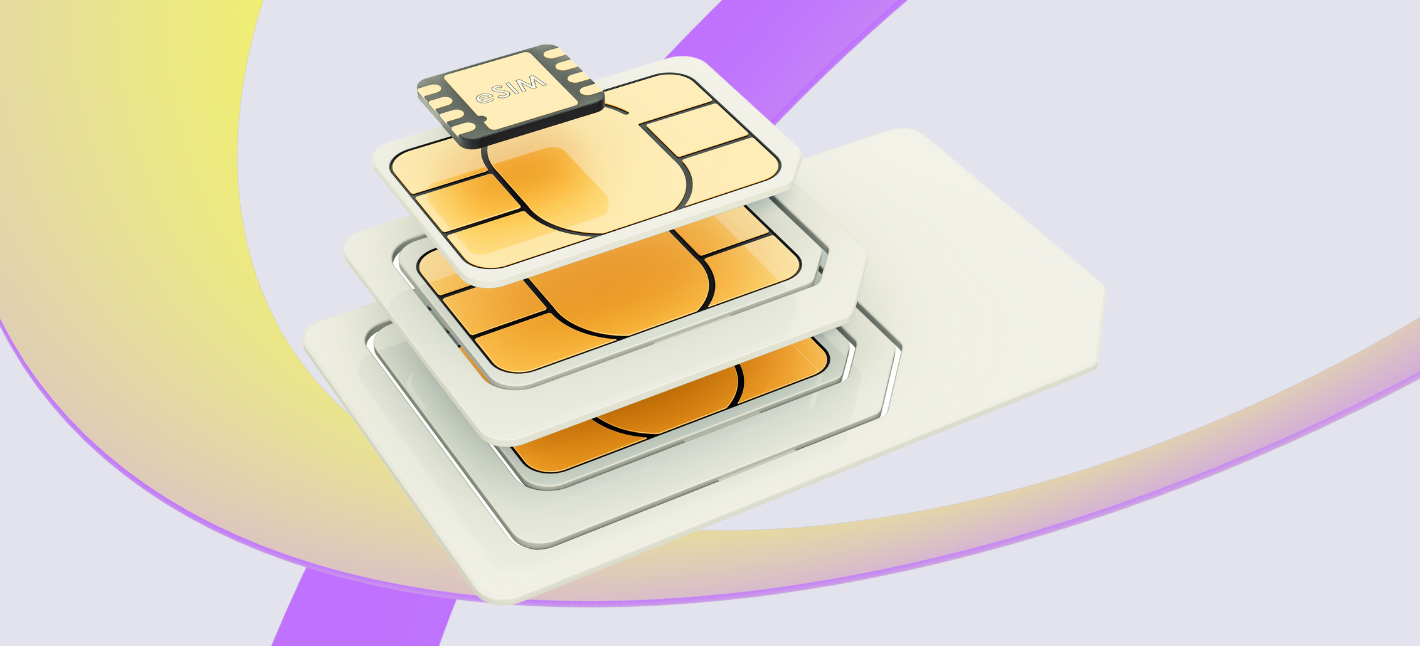Iot Device With Sim Card IoT SIM vs Normal SIM
In the landscape of the Internet of Things (IoT), connectivity standards and protocols play an important function in guaranteeing devices can communicate seamlessly. As extra gadgets are connected, the need for efficient interoperability will increase, resulting in quite a lot of standards that serve completely different use circumstances and requirements. This comparison of IoT connectivity standards and protocols highlights the nuances that differentiate every expertise, providing a clearer understanding of which might suit specific purposes.
LoRaWAN (Long Range Wide Area Network) is likely one of the dominant protocols typically utilized in IoT purposes that require long-range communication. Its low energy consumption makes it notably efficient for battery-operated gadgets, enabling them to function for several years without needing a battery replacement. The protocol is designed for wide area networks, making it suitable for urban, rural, and remotely deployed devices such as environmental monitors and smart metropolis purposes.
On the opposite finish of the spectrum, MQTT (Message Queuing Telemetry Transport) is a light-weight protocol designed for resource-constrained units and low-bandwidth, high-latency networks. Due to its publish-subscribe model, it allows devices to communicate in near real-time, making it particularly in style for purposes in smart homes and industrial automation. MQTT isn't constrained by location, enabling devices to communicate regardless of where they are located, so lengthy as there's web access.
Iot Single Sim Card IoT SIM Cards Professional IoT Connectivity

Zigbee and Z-Wave are two other protocols that have gained traction, especially in home automation contexts. Zigbee operates on low power and is designed for low knowledge price wireless personal area networks. With its mesh networking capability, it facilitates communication between a number of devices, creating a robust network that can extend its vary considerably. Z-Wave, whereas related, usually operates on a decrease frequency and has a definite structure that tends to work higher in indoor settings. Its focusing on of client merchandise provides it an edge in user-friendly purposes.
Bluetooth also plays a vital function in IoT connectivity, particularly in wearable know-how and nearby communication scenarios. The introduction of Bluetooth Low Energy (BLE) has expanded its functionality by permitting gadgets to speak with minimal battery usage. This protocol is ideal for functions the place low power is essential however nonetheless requires an inexpensive data throughput. The range tends to be shorter, making it appropriate for environments like personal health gadgets, smart locks, and different proximity-focused technologies.

Another significant participant within the IoT area is Cellular connectivity, including LTE and the rising 5G networks. These technologies provide high data charges and widespread protection, making them best for applications that require real-time data switch, such as autonomous autos and distant surveillance systems. However, their energy consumption is mostly greater in comparison with different protocols, which may be a limiting factor for IoT units with battery constraints. The evolution of 5G is particularly thrilling, as it promises to facilitate even bigger numbers of related devices with decrease latency.
A lesser-known, yet impactful, standard is NB-IoT (Narrowband IoT), particularly designed for low-power, wide-area networks. It supports a excessive number of connected gadgets over a bigger area, making it well-suited for rural functions, smart metering, and smart agriculture. Its low bandwidth necessities are sufficient for transmitting small knowledge packets, allowing gadgets to perform successfully with minimal energy consumption.
Vodafone Iot Sim Card What is an IoT SIM Card?
Comparing these protocols, a big issue to consider is the balance between vary, energy consumption, and data fee. Zigbee and Z-Wave excel in mesh networks but could not cowl as wide an space as LoRaWAN. Meanwhile, protocols like MQTT can prioritize data transfer efficiency over distance. The alternative between using a cellular framework or a specialised IoT protocol typically hinges upon the particular needs of an application, together with geographic and technical constraints.
Security remains a pressing concern across IoT implementations. With the number of connectivity standards, ensuring safe communication is paramount. Various official source protocols address safety in different methods, incorporating measures such as encryption and authentication protocols to safeguard knowledge. MQTT, for instance, permits for secure connections and payload encryption, whereas protocols like LoRaWAN have mechanisms to authenticate gadgets communicating over the community.
Compatibility is another essential side. As manufacturers more and more develop IoT options, the power to connect units from different vendors is essential. Standards like Zigbee and Z-Wave have established certification packages to authenticate devices’ interoperability. This compatibility fosters a extra cohesive smart home environment, permitting devices to work in concert quite than isolation.
Future developments in IoT connectivity standards are frequently increasing the probabilities. Researchers and industry specialists are growing advanced protocols that mix the strengths of current technologies while addressing their weaknesses. The integration of artificial intelligence (AI) and machine studying into IoT networks is further enhancing automation and information evaluation, pushing protocols to evolve and improve in real-time.
Iot Single Sim Card Buy IoT SIM Cards
Ultimately, deciding on an IoT connectivity standard or protocol isn't merely a technical choice; it should align with the objectives of the appliance and the needs of its users. The proper alternative could imply the distinction between a successful deployment and a project plagued by interoperability challenges, unnecessary costs, or lowered performance.
As IoT know-how continues to mature, the significance of understanding and selecting acceptable connectivity standards and protocols will only develop. Industry participants and builders must remain vigilant of developments and changes that influence the ecosystem. Knowledge of those protocols is crucial, as it equips stakeholders to make informed selections that can outline the next generation of connectivity.
In conclusion, the comparison of IoT connectivity standards and protocols reveals a posh however fascinating panorama. By understanding the advantages and limitations of each standard, developers can make educated decisions that can optimize their IoT deployments, enhancing effectivity and effectiveness and in the end paving the way in which for a more connected and intelligent future.
- Various IoT connectivity standards, such as MQTT, CoAP, and HTTP, cater to totally different knowledge transmission wants, influencing effectivity and utility suitability.
- MQTT is light-weight and optimized for high-latency networks, making it perfect for low-bandwidth, resource-constrained gadgets.
- CoAP helps RESTful interactions and operates over UDP, permitting for decreased overhead in comparability with traditional protocols used over TCP.
- Zigbee and Z-Wave focus on low-power, low-data applications, perfect for smart home devices and sensor networks.
- NB-IoT and LTE-M offer cellular connectivity particularly designed for IoT functions, offering wider protection and better penetration in city environments.
- Wi-Fi and Bluetooth, whereas prevalent, can battle with energy consumption and scalability in massive IoT ecosystems, making them much less ideal for certain use cases.
- LoRaWAN enables long-range, low-power communication, perfect for functions in distant areas requiring rare knowledge transmission.
- Each standard or protocol might come with unique security measures, influencing the choice based on the IoT deployment's threat mannequin.
- The rising development of multi-protocol environments allows devices to change between standards, enhancing flexibility and interoperability inside IoT ecosystems.
- Compatibility issues can arise from various IoT connectivity standards, necessitating cautious planning to ensure seamless communication across devices and platforms.undefinedWhat are the principle IoT connectivity standards out there today?
Iot Sim copyright Prepaid IoT SIM Netherlands
The main IoT connectivity standards include MQTT, CoAP, LoRaWAN, Z-Wave, Zigbee, and cellular standards like NB-IoT and LTE-M. Each of these standards serves totally different use cases, offering various ranges, energy consumption, and knowledge transmission capabilities.
How does MQTT differ from CoAP when it comes to use cases?
(Iot Board With Sim Card)
MQTT is designed for high-latency and low-bandwidth environments, making it glorious for scenarios requiring dependable messaging, similar to remote monitoring. CoAP, however, is tailored for constrained units and networks, making it suitable for purposes like smart residence automation where simplicity and effectivity are crucial.

What components should I consider when selecting an IoT protocol for my application?
Iot Sim Card Europe IoT SIM Card
Key elements include the application’s necessities for range, energy consumption, knowledge payload size, and community conditions - Iot Sim Card India. Additionally, consider the level of safety and scalability wanted, in addition to infrastructure and system interoperability.
Is safety a significant concern when evaluating IoT connectivity standards?
Yes, security is a paramount concern. Different standards supply various ranges of security features, like data encryption and authentication measures. It’s essential to gauge how every standard addresses potential vulnerabilities to make sure the protection of sensitive information.
Iot Sim Card Global IoT SIM Card Solutions
Which connectivity protocol is finest for long-range communication?
LoRaWAN is often thought-about one of the Check This Out best for long-range communication because of its ability to cover distances of up to 15 kilometers in rural areas. It is especially efficient in applications like agricultural monitoring and smart city deployments where units are spread out over giant areas.
How do energy consumption levels vary among different IoT protocols?
Global Iot Sim Card IoT SIM card
Power consumption varies considerably amongst protocols. For instance, LoRaWAN and Zigbee are designed for low energy utilization, suitable for battery-operated units needing long operational life. In contrast, cellular protocols like NB-IoT would possibly devour extra energy but offer greater bandwidth for important functions.
Can a quantity of connectivity standards coexist in the identical IoT environment?
Cheap Iot Sim Card IoT SIM
Yes, multiple connectivity standards can coexist within the same environment. This permits for larger flexibility and integration of assorted gadgets throughout totally different applications. However, it does require a well-architected system that may manage and route data between different protocols effectively.
What function does scalability play in selecting an IoT connectivity standard?
Scalability is essential when choosing a connectivity standard, especially for applications anticipated to develop over time. Some protocols allow for easy addition of gadgets and seamless integration into present networks, whereas others could have limitations that would hinder enlargement.
Iot Sim Card South Africa Secure IoT SIM
Are there particular industries that favor specific IoT protocols?
Yes, specific industries often favor explicit IoT protocols primarily based on their distinctive requirements. For example, smart agriculture tends to favor LoRaWAN because of its lengthy range, whereas residence automation usually utilizes Zigbee or Z-Wave for their low energy consumption and mesh networking capabilities.